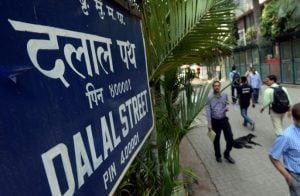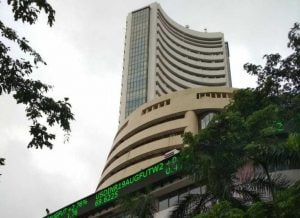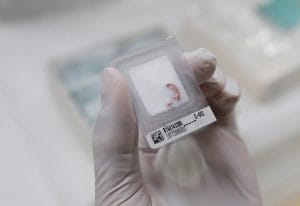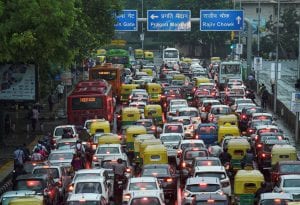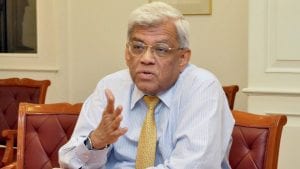Sikkim rail project: Is it development or disaster waiting to happen?
Summary
Bishnu Rai gets emotional every time he tries to speak about his home. Especially since he’s on the verge of losing it. Thirty-one-year old Rai lives on a hilltop in Melli town in landslide-prone Kalimpong district of northern West Bengal. The small cluster of three huts on the eastern Himalayan hilltop has been home to …
Continue reading “Sikkim rail project: Is it development or disaster waiting to happen?”
Bishnu Rai gets emotional every time he tries to speak about his home. Especially since he’s on the verge of losing it.
Thirty-one-year old Rai lives on a hilltop in Melli town in landslide-prone Kalimpong district of northern West Bengal.
The small cluster of three huts on the eastern Himalayan hilltop has been home to his family for over five decades after they moved here from neighbouring Nepal. But a railway project that aims to connect Sikkim with the rest of the country is likely to rob Rai of his home and the many memories that fill its every nook and corner.
“We are not against development,” says Rai, adding, “However, this project will wreak havoc on the hills and forest, inviting natural disasters. We depend on the forest for our livelihood and its destruction will affect us. Work on the project has started in some pockets in the area but we have not allowed the railways to start construction on the hilltop until the Forest Rights Act(FRA), 2006, regulations are properly followed.” The FRA mandates taking permission from gram sabhas before undertaking any project in forest areas, which Rai claims hasn’t been done for this project.
A crucial link for Sikkim
The nearly 45 kilometers-long Sivok-Rangpo rail project, considered to be an engineering marvel, aims to connect Sivok railway station in Darjeeling district in West Bengal to Rangpo in East Sikkim with a single broad-gauge line.
The train route will pass through tunnels and bridges. The stretch will have 14 tunnels, 14 major bridges and eight minor ones and five stations – Sivok, Riyang, Teesta Bazar, Melli and Rango. Teesta Bazar will be an underground railway station. The longest distance between two stations will be around 17.6 kilometres, between Melli and Rangpo. The length of the longest tunnel will be around 5.13 kilometres and the longest bridge will be around 375 meters.

It is being speculated that the project is part of an ambitious plan of the central government to extend railway connectivity to Nathu La mountain pass, in the Himalayas in East Sikkim district, and counter the development projects rolled out by China on the border. The connectivity would also help in mobilising the army in the event of any hostile situation developing with China.
“It would be too early to talk about the connectivity with Nathu La as it is the final phase. The second phase will be to reach till Gangtok in Sikkim. At present, our focus is to complete the first phase as early as possible,” says T.T.Bhutia, general manager, project head, Indian Railways Construction Company Limited (IRCON), the implementing agency of the project.
In 2009, a Memorandum of Understanding (MoU) for the project was signed between the West Bengal government and then Union Railway Minister Mamata Banerjee. On 30 October that year, Banerjee and India’s then Vice-President Hamid Ansari laid the foundation stone of the project.
Banerjee had assured that the project would be completed in five years. However, according to railway officials, difficulty in obtaining land clearances from villagers has been one of the main reasons for the delay. Railway officials made it clear that another five years would be needed after obtaining all the land needed.
Estimated to cost around Rs 1,339.48 crores when it was sanctioned in 2008-2009, the project touched Rs 4085.69 crores in 2015 due to the delay. In 2017, the railways started construction and around 750 meters of the tunnel has been dug so far – 500 meters in Rangpo and the rest in Lohapool, West Bengal.
At what cost?
Although railway officials peg the number of houses that will be lost to the construction of this line at 72, villagers in Melli claim that nearly 800 houses will be destroyed.
“We fear the entire village would be destroyed because heavy machines would need a larger area for work and all houses in their path will be demolished. The construction will also cause massive pollution. The tunnels will impact our groundwater sources that give us our supply for drinking and other daily uses,” says Rambahadur Rai, 69, who lives close to the hilltop.
Villagers living in Rangpo, a part of which also lies in West Bengal, have demanded the stringent implementation of FRA, 2006. The villagers are insisting on the railways obtaining No-Objection Certificates (NOC) from their community before going ahead with the railway project. They cite an earlier instance to support their case.
Construction of a flyover over Rangpo river was recently stopped by the Calcutta High Court in February 2019 for non-compliance to the Act. “We approached the Calcutta High Court and secured an order to stop the construction of a one-kilometre flyover being built over Rangpo because FRA rules had been flouted. The flyover was a threat to the environment and would have resulted in the destruction of 57 houses and a portion of a playground. Despite all this, no permission was sought from the gram sabha. This was a flagrant violation of the rules,” says Ganesh Khati, 39, who filed the petition in the High Court against the flyover construction.

Activists apprehend natural disasters
Environmentalists have voiced concerns about the impact of the rail link project on the environment. “This area is a seismic zone IV and the slopes are fragile. The natural equilibrium of the region might get destroyed and the danger of landslides and earthquakes might increase if this construction continues. We have already seen roads caving in some regions of the hills after construction started in some parts,” says Jatishwar Bharati, a geographer based in Jalpaiguri, West Bengal. According to Bharati, the deforestation could also stop the natural underground recharge of water, increasing water woes in the region. “Several streams have already run dry. We have seen how development projects have ruined Uttarakhand and taken several lives,” he adds.
A section of geologists says that road constructions have already made mountains weak giving rise to the dangers of landslides and other natural disasters. Darjeeling’s mountain rock is quite fragile and its compactness is low. Besides, the area receives very high rainfall and its soil has extremely low water retention ability. Under these circumstances, a landslide is always waiting to happen, especially since appropriate building norms are hardly followed.
But another section of geologists says that it would be too early to predict anything on the project unless it becomes operational.
“It is difficult to predict what impact the project would have on the environment unless it kick-starts. It might affect the nature or might not. We have to wait and watch. But sub-Himalayan belts of Eastern Himalayas are prone to dangers,” said Abdul Mathin, a retired geologist, Calcutta University
It is being widely believed that back-to-back dams on upper reaches of Ganga River and its tributaries like Mandakini, Bhagirathi and Alaknanda in Uttarakhand had intensified the magnitude of the disaster of 2013 floods in Uttarakhand.
Swatahsiddha Sarkar, director of the Centre for Himalayan Studies at North Bengal University, interviewed 130 villagers, living along proposed rail link route, last year. Of them, 47 percent said they would not allow the project to come up under any circumstances. “We interviewed people in five villages, many of whom feared that the project would not only trigger natural disasters but the increased connectivity might also lead to an increase in the crime rate and rise in the number of tourists would translate into rising pollution.”
It is because now the road link remains the only way to reach Sikkim. But the influx of people will increase as the rail link is established and so greater dangers of increasing crime because the movement of people will be frequent. As tourists would be more so petty crimes might rise
According to Soumitra Ghosh, spokesperson of the All India Forum of Forest Movements (AIFFM), around 24 villages will be destroyed due to the railway work. The AIFFM has been part of agitations against the project in the area and has submitted a memorandum to the district magistrate of Kalimpong to save the villages. “The government has been putting intense pressure and threatening those raising their voices against this project. The government is being very shrewd. They will displace only a few people initially, and will increase the numbers bit by bit to prevent any mass agitations,” said Ghosh.

Railways assure minimum damage to the environment
The Railways, however, have dismissed chances of natural disasters and, instead, assured that the rail route would lead to an increase in tourism and, therefore, more avenues of employment and income generation. Officials claim that issues regarding the NOC would also soon be sorted out.
“The alignment of the route has been done in such a way that there is minimal damage to the environment and biodiversity. We are already planting twice the number of trees that are to be uprooted. The major part of the route has been planned underground to ensure that no harm is done to the environment. We have a technical team that is looking at ways to minimise the impact on the environment. We hope that the issues the villagers have are sorted out soon so that work can progress faster,” says Bhutia, adding that only 30 families will be displaced by the project and they would be rehabilitated soon.
(This story was first published on Mongabay)

Elon Musk forms several ‘X Holdings’ companies to fund potential Twitter buyout
3 Mins Read
Thursday’s filing dispelled some doubts, though Musk still has work to do. He and his advisers will spend the coming days vetting potential investors for the equity portion of his offer, according to people familiar with the matter


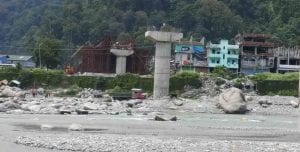






 Listen to the Article
Listen to the Article  Daily Newsletter
Daily Newsletter





